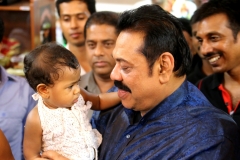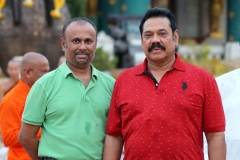The British in Uganda
In 1875 the explorer Henry Stanley reached Uganda. At that time Uganda was divided into kingdoms. Shortly afterwards the first missionaries came to Uganda. The first Anglican missionaries arrived in Uganda in 1877. The first Roman Catholic missionaries arrived in 1879. Catholics, Protestants and Muslims all tried to convert the Ugandans.
However there was much hostility to the new religions. In 1885 James Hannington the first bishop of Eastern Equatorial Africa was murdered.
Nevertheless in the wake of missionaries came trade. In 1888 the British government gave the British East Africa Company control of Uganda. Meanwhile the European powers decided to divide up Africa among themselves. In 1890 Germany and Britain signed an agreement confirming that Uganda was in the British sphere of influence.
Gradually the company took control of Uganda and the local chiefs were reduced to being puppet rulers.
Finally in 1894 the British government made Uganda a protectorate (colony). However the traditional chiefs were kept as puppets.
In 1904 cotton was introduced to Uganda and by 1914 huge amounts of cotton were being exported. Moreover in the 1920s large amounts of tea and coffee were grown in Uganda.
Meanwhile the missionaries provided schools for Ugandans and literacy became increasingly common. In 1920 executive and legislative councils were formed in Uganda. The country continued to develop and in 1929 a railway joined Toror and Soroti.
During World War II Uganda exported wood for the war effort. However the Ugandans were becoming restive. Riots took place in 1945 and in 1949. Yet in 1945 the first 3 Africans were appointed to the legislative council. In 1950 the number of African members was increased to 8.
Furthermore after World War II the governor Sir John Hall (1944-1951) promoted mining in Uganda. In 1954 a hydroelectric plant was opened at the Owen Falls on the Nile. Meanwhile coffee and cotton exports boomed.
A census in 1948 showed there were almost 5 million African Ugandans, almost 37,000 Asians and less than 3,500 Europeans. (From the end of the 19th century many Asians migrated to Uganda and they formed a middle class of traders and shopkeepers between the natives and the whites).
History and Ethnic Relations
Emergence of the Nation. After independence in 1962, ending a period of colonization that began in 1885, there was little indication that the country was headed for social and political upheaval. Instead, Uganda appeared to be a model of stability and progress. It had no white settler class attempting to monopolize the cash crop economy, and there was no legacy of conflict. It was the African producers who grew the cotton and coffee that brought a higher standard of living, financed education, and led to high expectations for the future.Independence arrived without a national struggle against the British, who devised a timetable for withdrawal before local groups had organized a nationalist movement. This near absence of nationalism among the country’s ethnic groups led to a series of political compromises.
National Identity.Ethnic and religious divisions as well as historical emnities and rivalries contributed to the country’s disintegration in the 1970s. There was a wide gulf between Nilotic speakers in the north and Bantu speakers in the south and an economic division between pastoralists in the drier rangelands of the west and north, and agriculturists, in the better-watered highland and lakeside regions. There was also a historical division between the centralized and sometimes despotic rule of the ancient African kingdoms and the kinship-based politics elsewhere. The kingdoms were often at odds in regard to the control of land. During the colonial period, the south had railways, cash crops, a system of Christian mission education, and the seat of government, seemingly at the expense of other regions. There also were religious groups that had lost ground to rivals in the past, for example, the domination of Muslims at the end of the nineteenth century by Christians allied to British colonialism. All these divisions precluded the formation of a national culture.
Ethnic Relations.After independence, there were conflicting local nationalisms. The Buganda’s large population, extensive territory in the favored south, and self-proclaimed superiority created a backlash among other Ugandan peoples. Nubians shared little sense of identification with other groups. The closely related peoples of nearby Zaire and the Sudan soon became embroiled in civil wars in the 1960s and 1970s, drawing in ethnically related Ugandans. Today relations are relatively harmonious. However, suspicion remains with the president believing to favor certain groups from the west of the country over others.


